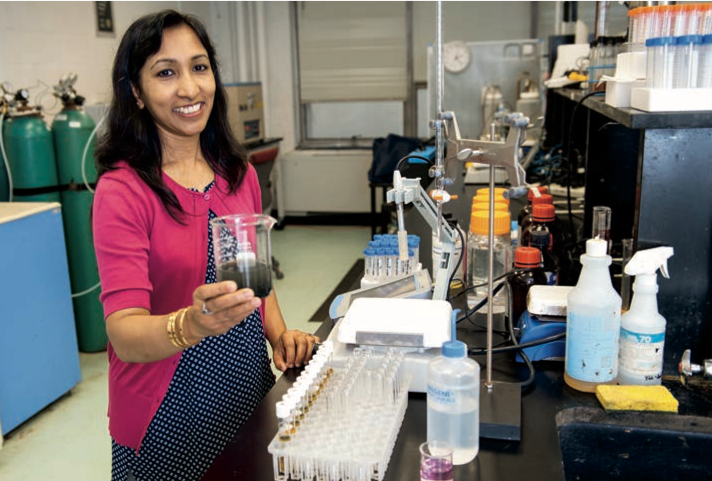Dr. Rumana Riffat: Waste Not, Want Not
Necessity is the mother of invention, they say, and that is as true in the field of wastewater treatment as it is elsewhere.
As rising energy costs drive up the cost of wastewater treatment, treatment plants are reaching out to researchers in the field to help find new ways to lower the energy use associated with wastewater treatment, and to re-use the by-products of the treated water. One of the people they are consulting is Professor Rumana Riffat of the Department of Civil and Environmental Engineering.
“Thirty to 40 years ago, the emphasis was on cleaning up the wastewater to take everything out of it and to discharge it into the river in a more or less pristine condition,” she explains. “That is still the goal, but now we don’t want to throw out everything that we are taking out of the water. We’re now trying to come up with beneficial re-use for products that we previously categorized as waste.”
Biosolids, or treated sludge, form a large portion of the products that come out of treated wastewater, and some of them can be re-used as fertilizers rather than discharged as waste. Class A biosolids can be used more widely as fertilizers than Class B biosolids, but they are more expensive to create.
Wastewater treatment plants create biosolids and natural gas through a fermentation process called anaerobic digestion, which uses a high temperature and micro-organisms that mostly already exist in the sludge. Because of the energy costs involved in treating the sludge at the required temperature—55 degrees Celsius for Class A biosolids—many plants instead opt to produce Class B biosolids, which can be manufactured at lower temperatures.
Millions of gallons of sludge are treated every day at wastewater treatment plants, so a reduction in the temperature required to produce Class A biosolids—even a 10-degree reduction, according to Professor Riffat—could lead to significant energy savings for plants. To try to hasten the day when this is possible, she and her students are working to determine whether a treatment at 45 degrees Celsius is sufficient to achieve the pathogen destruction necessary to produce Class A biosolids.
Professor Riffat and her research team are conducting this research as part of a U.S. Department of State-funded, collaborative research project with Quaid-i-Azam University in Pakistan. The project aims to develop small-scale, sustainable wastewater treatment systems for the locality, with the goal of re-using water and biosolids. She conducts additional research at the nearby Blue Plains treatment facility, one of the largest such facilities in the world, and has a long- standing collaborative relationship with the District of Columbia Water and Sewer Authority.
Yet, Professor Riffat is not content with the gains that have been made recently across the discipline. She aspires to more, saying, “Now we are taking a second look at digestion as a process for producing energy instead of something that just eats up energy.”


